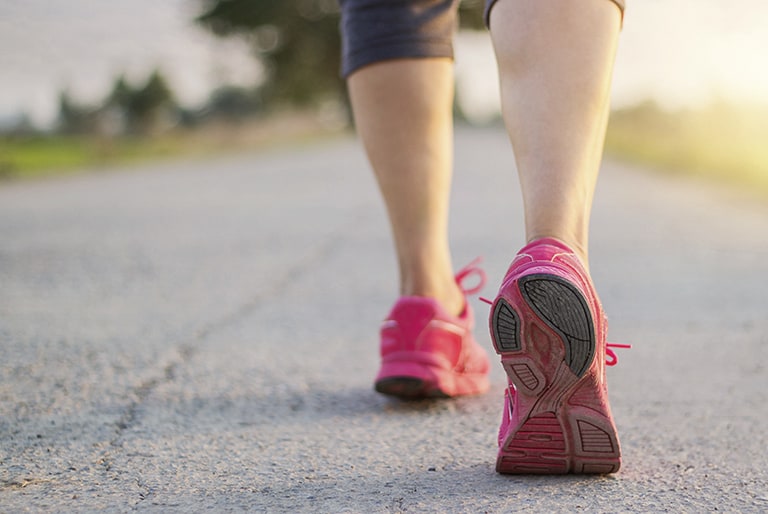How can I get rid of varicose veins?
For many people afflicted with varicose veins they are primarily a beauty flaw. But the extended veins with their build-up of blood also harbour an increased risk of thrombosis. Here you can learn how you can get rid of varicose veins and how best you can prevent them.

How can I get rid of varicose veins?
The following methods have proven to be successful at the removal of the unloved varicose veins.
- Vein stripping: stripping or partial stripping is a classic method for removing varicose veins. The affected vein is severed at the top and bottom with two small incisions and pulled out.
- Sclerotherapy: with sclerotherapy the doctor injects a solution into the veins which causes the vein walls to stick together.
- Laser therapy: through a small incision, the doctor inserts a laser probe into the affected vein, which seals due to the heat of the laser. Over time, the healed varicose vein is broken down by the body.
- CHIVA: varicose veins on the trunk veins can be treated with the CHIVA method. For this, the doctor ties the affected vein at certain points and thereby suppresses the reflux.
- Radiofrequency therapy: a modern method is radiofrequency therapy, in which a small catheter is inserted into the varicose vein up to the main venous valve, and is then removed again step-by-step. Here, too, heat is used to close the varicose vein.
- Venous valve correction: nowadays, there are also special procedures for correcting the venous valve, so that is closes the veins again sufficiently and no blood can flow back down.
Normally, compression stockings will have to be worn for several weeks as part of the therapy in order to prevent thrombosis and to support the regeneration of the venous system.
Which method is most suitable is determined by the extent and type of varicose veins. You doctor will advise you on the different options and their benefits.However, varicose veins do not always have to be removed. Sometimes they are more of an optical flaw than a serious threat to your health. Depending on the diagnosis, your doctor will decide whether surgery is even necessary.
What should I do when varicose veins start?
If there are initial signs of varicose veins under your skin, it is time to take action. Because the sooner the unsightly protrusions are treated, the better you can slow down their further development – even if you cannot completely reverse it in most cases. If there are already signs of swollen legs and spider veins, which often develop into varicose veins, the following tips help to support the functions of your veins:
- Plan as much movement as possible into your day. Walk, run and go rambling whenever possible. Avoid using the elevator and use every stair as vein sport. Go on your bike to work and find a sport which you really enjoy. If you have to stand or sit a lot at work, move your feet and legs on a regular basis in order to stimulate circulation and to prevent a build-up of blood in your legs.
- Actively support the fluidity of your blood. For that, you need to consume sufficient amounts of fluids so that your blood flows easily through your blood vessels. Medicines such as Veno SL® 300 also help to make your blood more fluid and to stabilise your blood vessels.
- Train your vein function. On the one hand, this can be achieved by vein gymnastics, to activate the muscle pump. On the other hand, contrast showers have a training effect on blood vessels. Since cold makes them contract and heat makes them expand. This targeted change keeps the vessels elastic.
- Put your feet up. What sounds like pure pampering is really a first aid measure for when too much blood collects in your legs. Place your feet higher than your hips and let the blood flow out of your legs.
- Wear compression stockings. If the first bulges are visible in your veins, you can counteract them and support the removal of blood by wearing compression stockings.
It is best to take early precautions and to promote the health of your veins, so that varices do not at all protrude beneath your skin. The risk of varicose veins increases during pregnancy and should be reduced early enough with the appropriate measures.
What sport is good for varicose veins?
Basically, almost any type of movement which strains the leg muscles is good against varicose veins. Particularly recommended, however, are endurance sports such as jogging, walking, rambling, cycling and swimming. Dancing, gymnastics, yoga and cross-country skiing also get the muscle pump working. Conversely, you should avoid sports which are practised in a seated position and which have a higher risk of injury.
Can varicose veins return?
If you have just gotten rid of your varicose veins, it unfortunately does not mean that they have disappeared for good as the unattractive varices can develop somewhere new. So, after successful treatment, that is why you should actively support your veins so that the disease does not start from the beginning again. Move enough, drink enough, make sure that you have a balanced and vitamin-rich diet, lose excess weight and dedicate yourself consciously to the health of your veins – so that the vein walls do not again become slack and cause a build-up of blood.